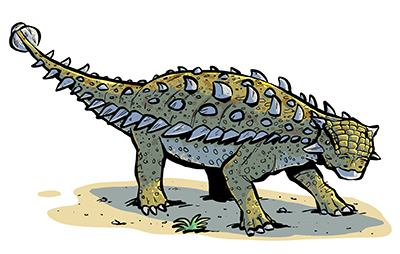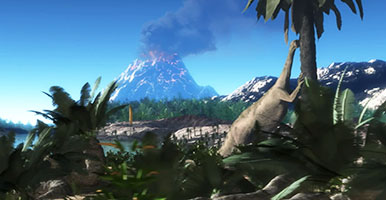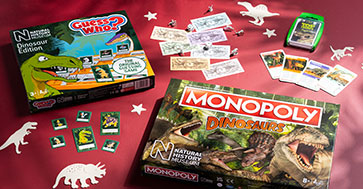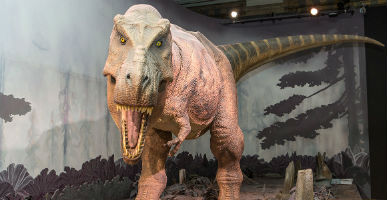Tarchia
Tarchia
- Pronunciation:
- TAR-kee-ah
- Name meaning:
- 'brainy one'


- Type of dinosaur:
- armoured dinosaur
- Length:
- 5.5m
- Diet:
- herbivorous
- When it lived:
- Late Cretaceous, 75-70 million years ago
- Found in:
- Mongolia
Tarchia was an ankylosaur, a heavily armoured type of dinosaur.
Like many ankylosaurs, Tarchia sported a hard, bony club on the end of its tail. Experts have debated whether the club was used for defending against predators, for fighting other Tarchia or both.
In 2021, a new Tarchia specimen was discovered with impact damage to the tail and hips. This suggests that it may have been hit by the tail club of another ankylosaur.
What does Tarchia mean?
The name Tarchia comes from the Mongolian word 'tarkhi', meaning 'brain'.
Teresa Maryanska, a Polish scientist who specialised in Mongolian dinosaurs, chose this name because the dinosaur had a larger braincase than its close relative Saichania.
Ankylosaurs assemble!
Tarchia and Saichania - plus a third ankylosaur called Zaraapelta - all lived together in what is now the Gobi Desert. Although the Mongolian desert today is mostly rocks, in the Cretaceous Period it was a sandy expanse with dunes and oases.
Tarchia's mouth shape suggests that it was probably quite selective about the types of ground-level plants it ate. Earlier ankylosaurs tended to eat many different types of plants in bulk.
Tarchia vs Tarbosaurus
Tarchia also lived alongside Tarbosaurus, a meat-eating dinosaur closely related to Tyrannosaurus.
Tarbosaurus tooth marks have been found on a Tarchia skull, showing that the ankylosaur was hunted by the giant predator.
Taxonomic details
- Taxonomy:
- Dinosauria, Ornithischia, Thyreophora, Ankylosauria, Ankylosauridae
- Named by:
- Maryanska (1977)
- Type species:
- kielanae

Step back in time
Find out more about dinosaurs' lives and the world they lived in.

Fun and games
Learn more about dinosaurs through toys, board games and activity kits, available from our online shop.

Dinosaurs gallery
Roarrr. Come face-to-face with some of the Museum's most famous dinosaurs.




